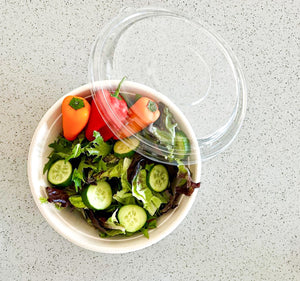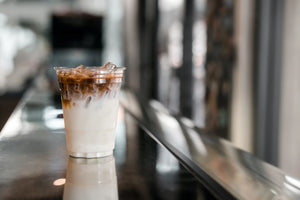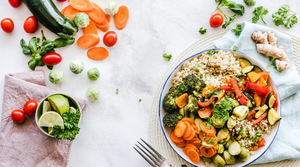The recycling process is important and has a part to play in sustainability. However, currently it is still only a partial solution because the recycling operation is not environmentally friendly as it involves transporting, washing, sorting, chopping/ shredding/re-melting etc. It uses significant energy and resources. Hence there is a net environment cost. Many of the products that we think are ‘recycled’ are actually ‘down cycled’. And even after recycling, we are still left with bags of trash.
The greater the number of different materials used in packaging, the harder it becomes to recycle that product. And yes, this is the case even for those products that claim to be ‘recyclable’. Of all the ‘recyclable’ products, the following are the five top recycling villains because of the variety of materials they are made from.
- Pringles packaging - the paper fibre goes into the pulper but what about the plastic lid, the foil, the metallic lining and the metal base?
- Lucozade Sport bottles - the polymer shrink wrap sleeve means it cannot be recycled.
- Cleaning spray bottle –only the body of this so called recyclable bottle can be recycled. The spray is made of 2 or 3 other polymers and a metal spring!
- Black plastic food trays – if thrown with the torn film and a blood stain card becomes a candidate for the landfill.
- Whisky packaging - is a recycling nightmare its metal bottom and top to the sleeve, the glass bottle and the metal cap.
Plastics vs. Glass vs. Aluminium
There are four main categories of recyclable materials – paper, glass, aluminium and plastics. Plastic is where recycling gets most controversial. According to the Environmental Protection Agency’s estimates, more than 90 percent reduction in greenhouse gases come from just a few materials - paper, cardboard and metals like the aluminium in soda cans.
The carbon-reduction benefits of plastics are less clear compared to other recyclable materials. Recycling one ton of metal or paper saves about three tons of carbon dioxide while recycling one ton of plastic saves only slightly more than one ton of carbon dioxide. Recycling glass requires three tons in order to get about one ton of greenhouse benefits. Recycling aluminium is the most profitable and environmentally sound. Making a can from recycled aluminium reduces its carbon footprint by up to 95%.
Glass
Glass bottles are 100 percent recyclable and an estimated 80 percent of recovered glass containers are made into new glass bottles. Once you toss your glass bottle in the recycling bin, manufacturers can have it back on the shelves in a month. Plus, using recycled glass when making new glass bottles reduces the manufacturer’s carbon footprint. Furnaces may run at lower temperatures when recycled glass is used because it is already melted down to the right consistency.
Aluminium
Like glass, aluminium cans are completely recyclable and are commonly recycled worldwide as part of municipal recycling programs. Aluminium cans can be recycled repeatedly with no limit.
Plastic
Plastic seems to be the worst recycling offender. Recycling plastics mitigates carbon impacts only to a limited extent. Each time plastic is manufactured, broken down, made into new products, CO2 is released, and the cycle goes on and on. While recycling is key to removing the plastic waste piling up in our landfills and oceans and virtually all plastics can be recycled, but many are not because the process is expensive, complicated and the resulting product is of lower quality than what was put in.
Since plastic recycling mitigates carbon impacts only to a limited extent, prevention of plastic waste should be the preferred method of waste reduction for businesses in food and beverage service.
Plastic (recyclable or recycled) is BAD because you have to dig for fossil fuels to make it and at the end of its lifespan (after being recycled for 5 to 7 times) it stays on Earth!
Compostable, home compostable and biodegradable food packaging such as Element Packaging by default have zero plastic therefore lesser carbon impact.
Even if these products go into our modern landfill, they do not have long term harming effects like plastic does.



